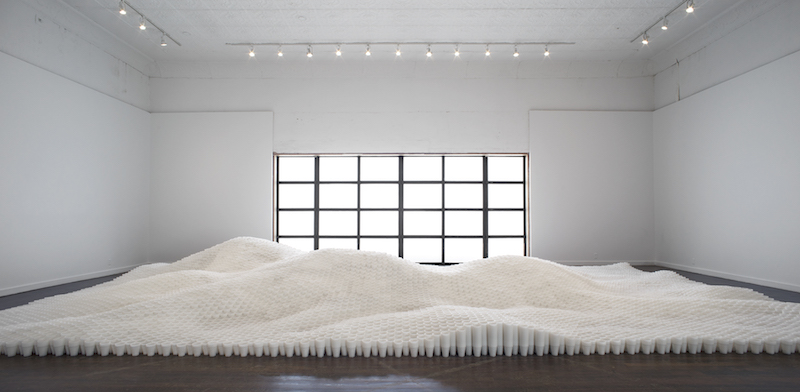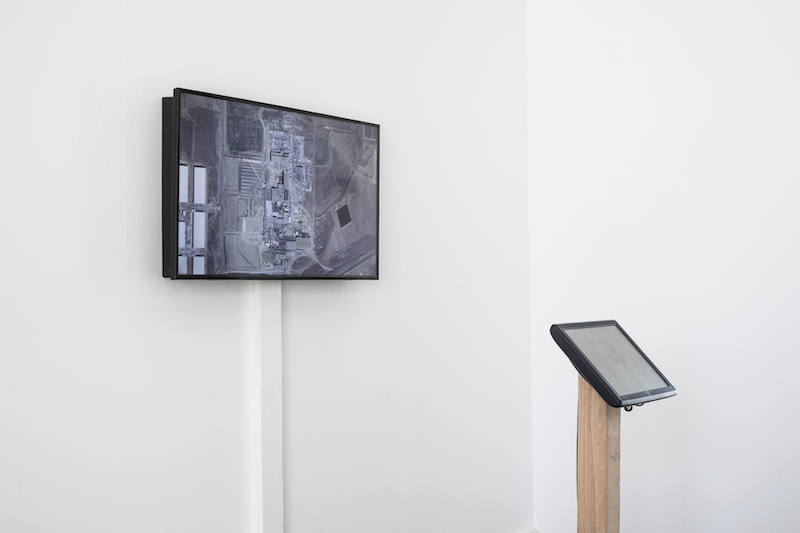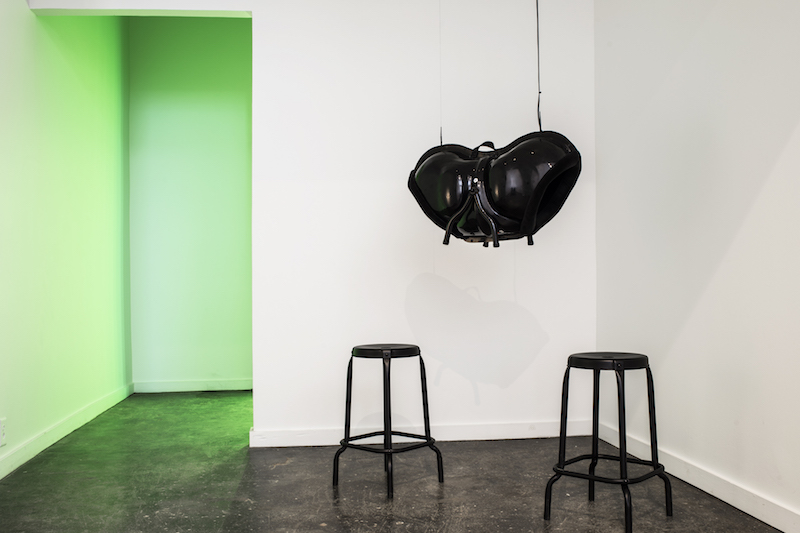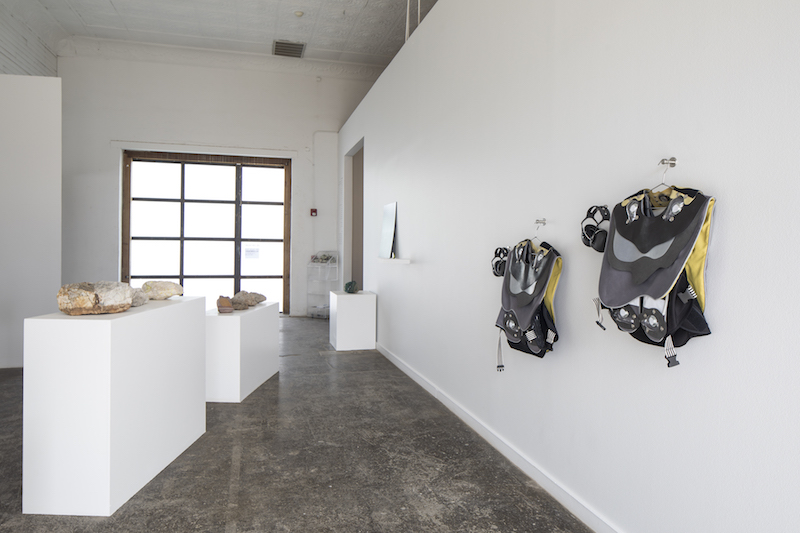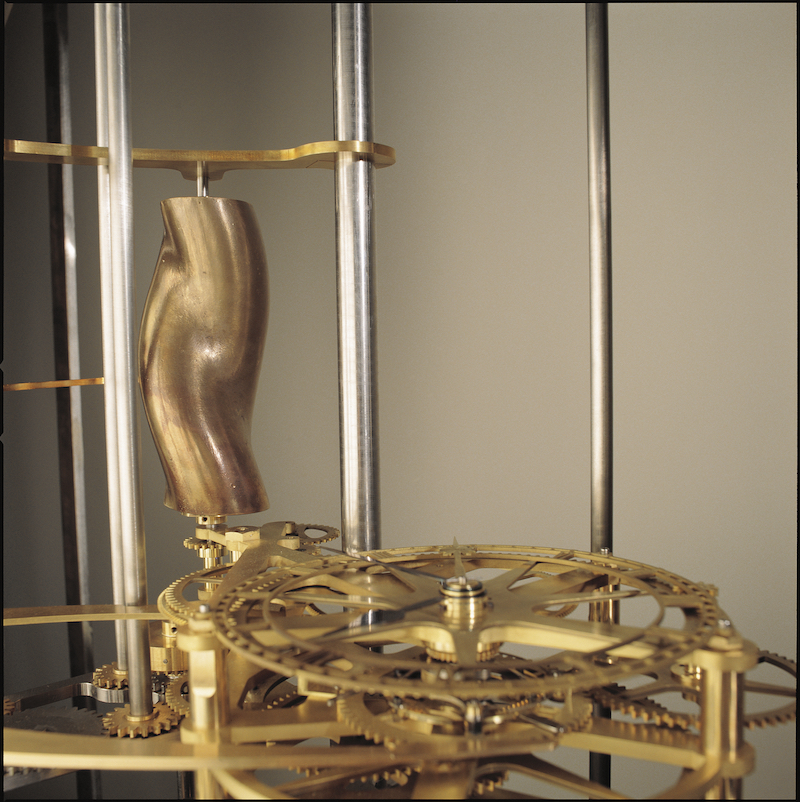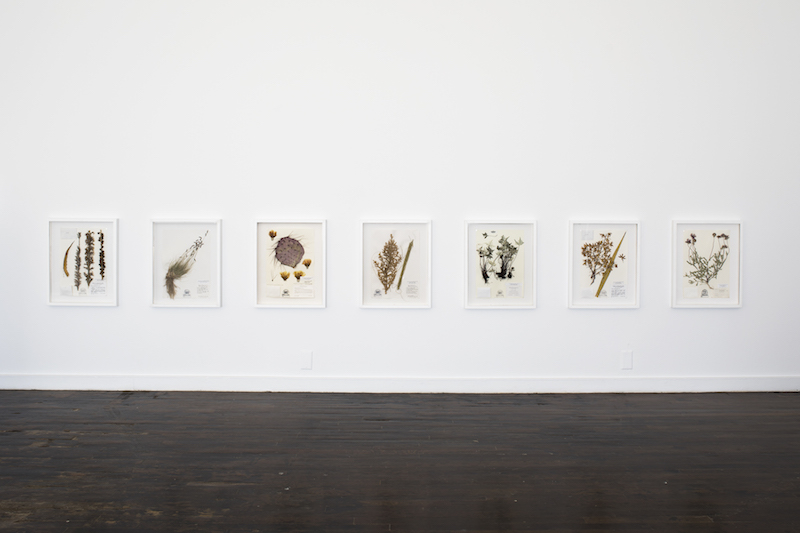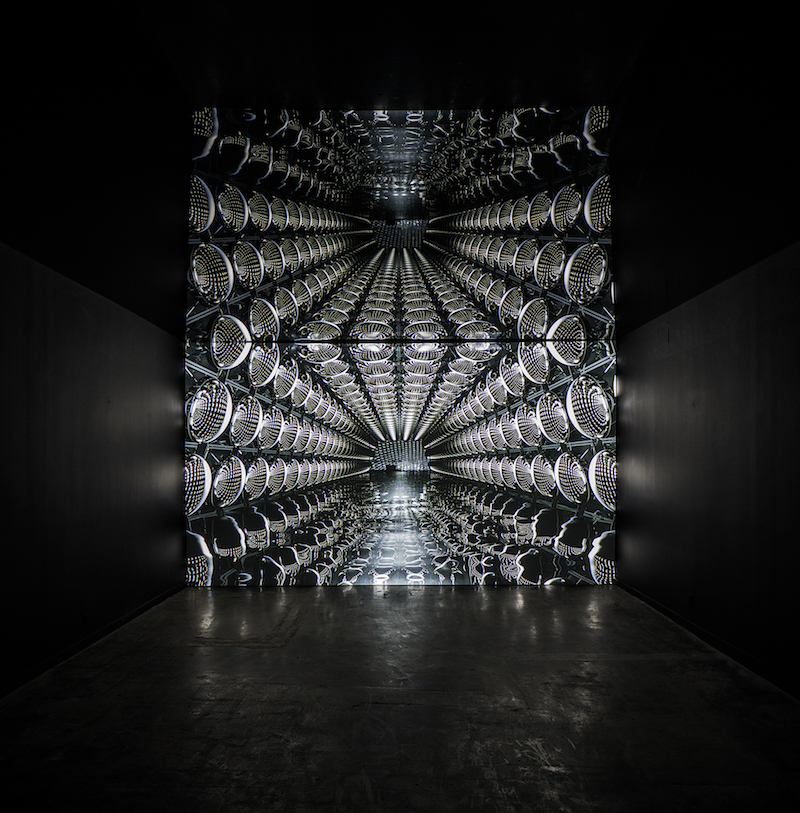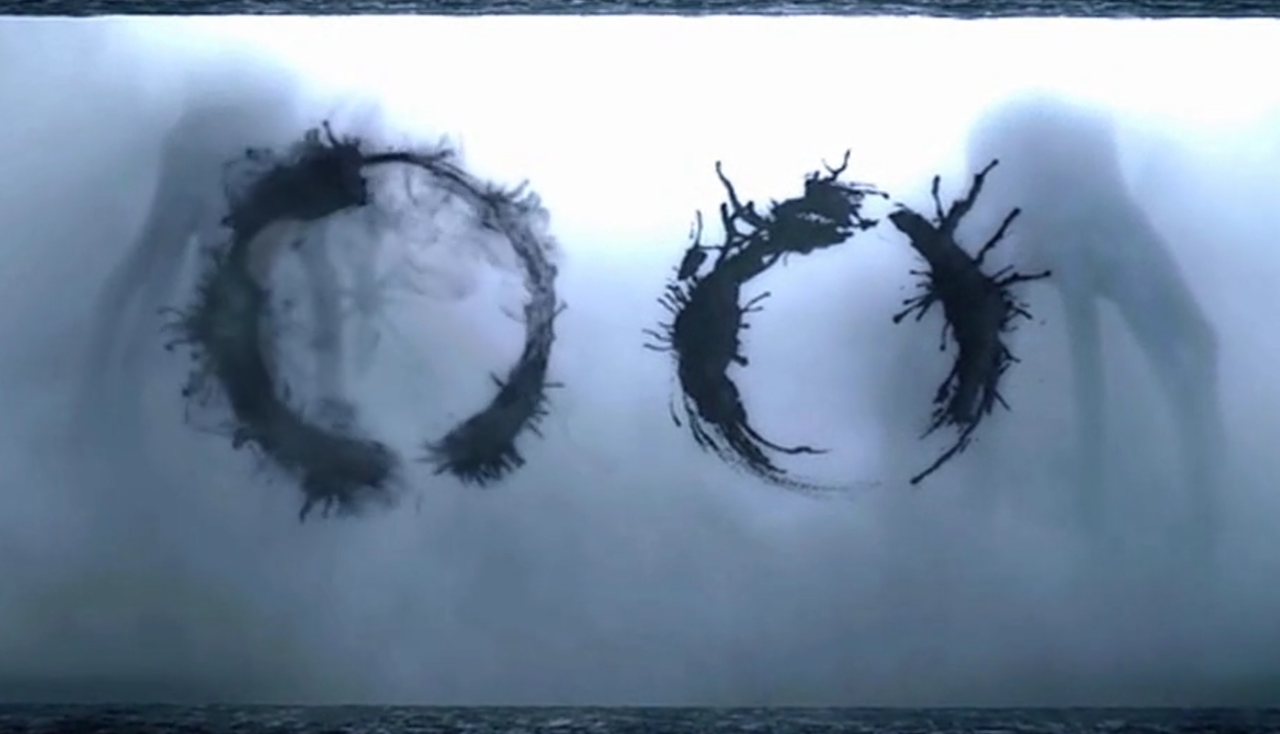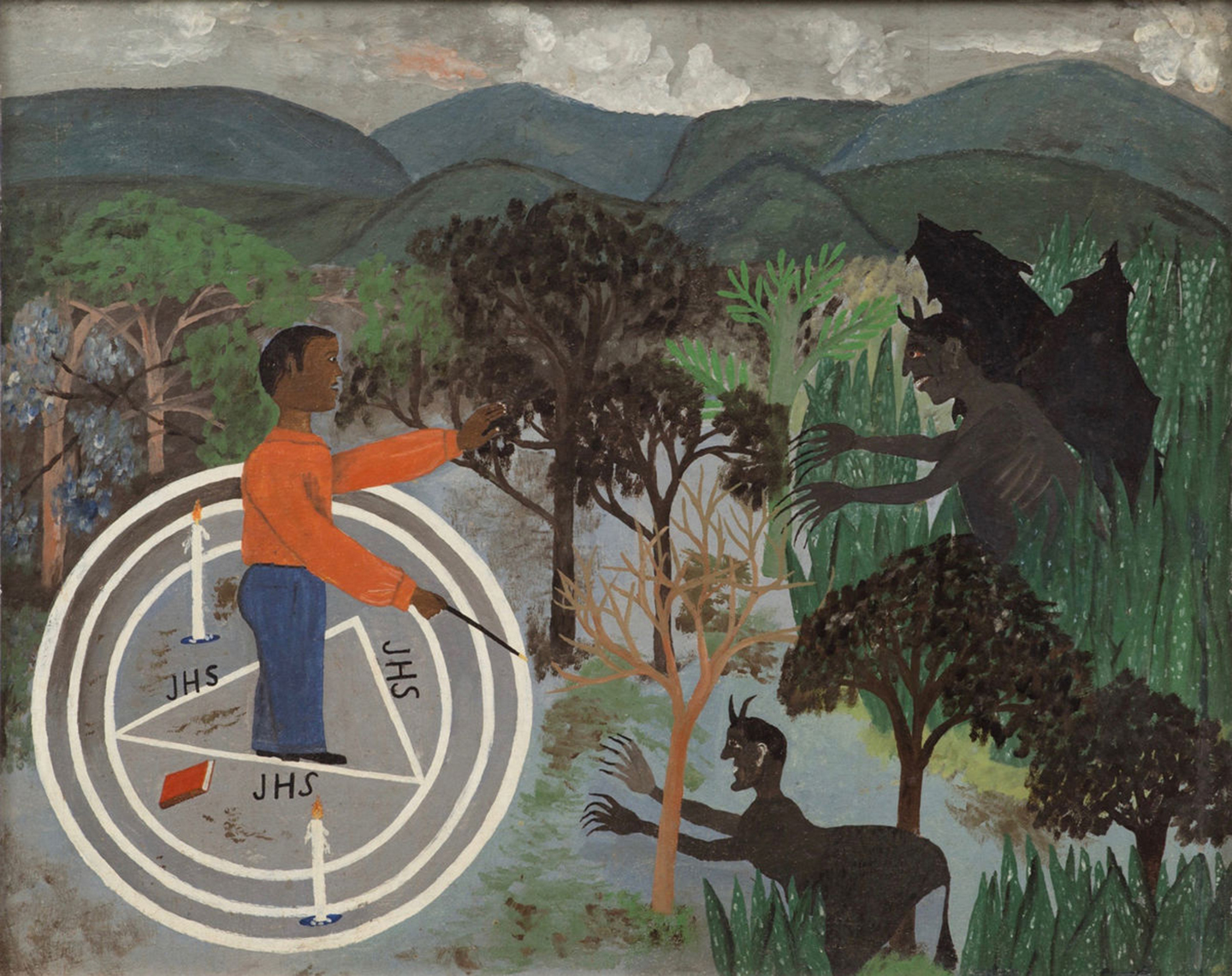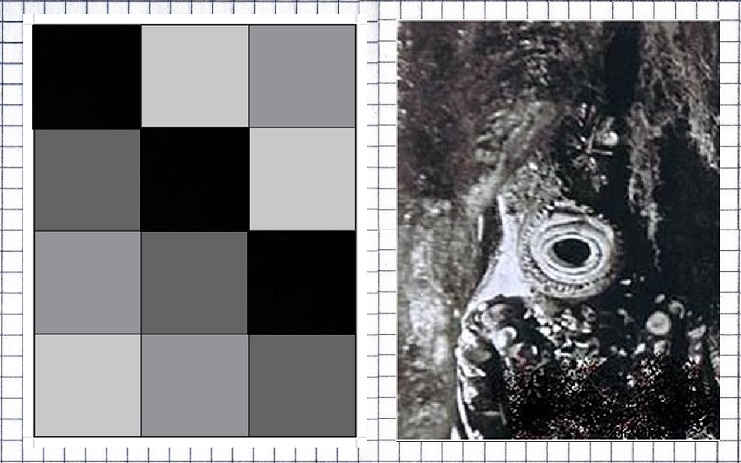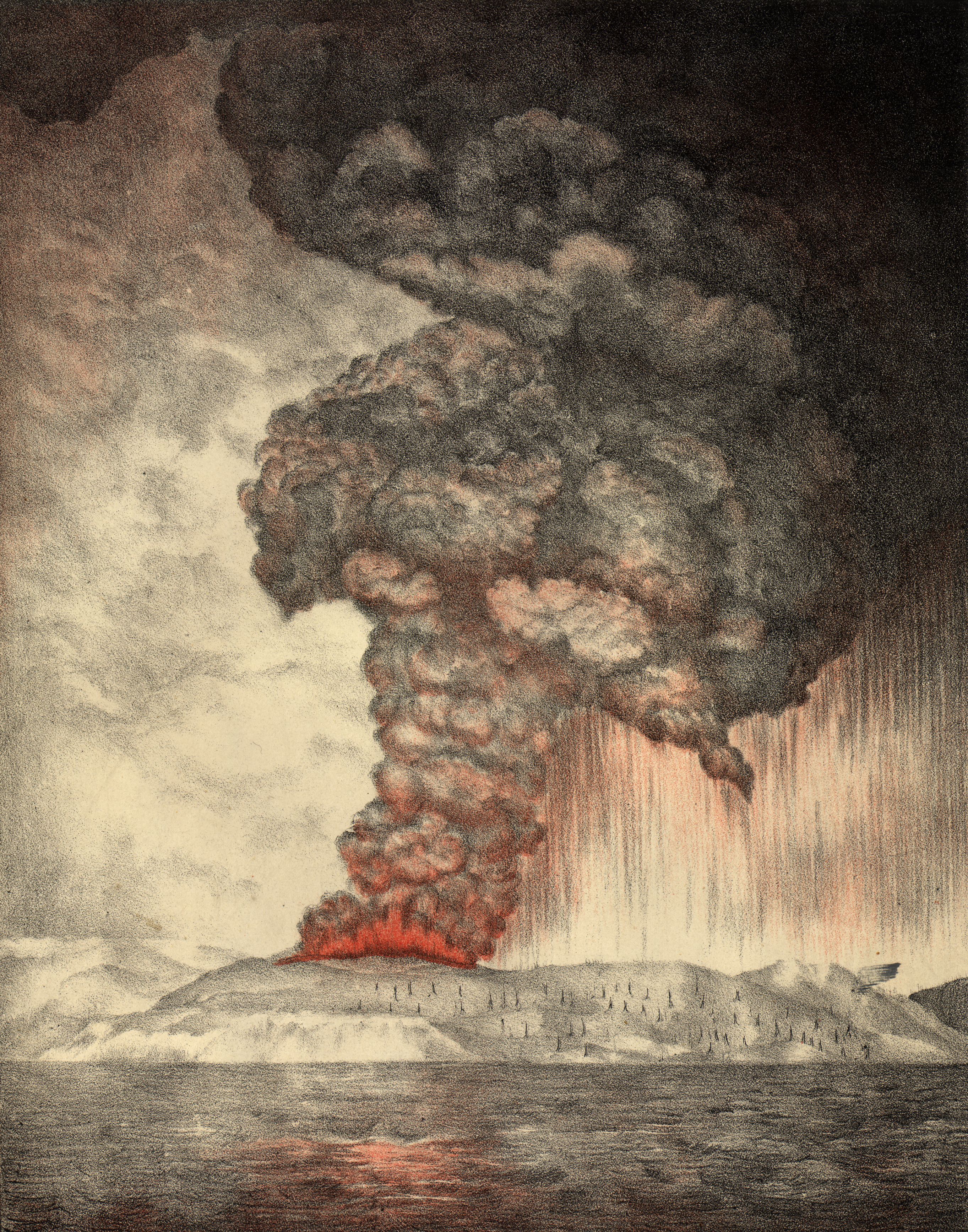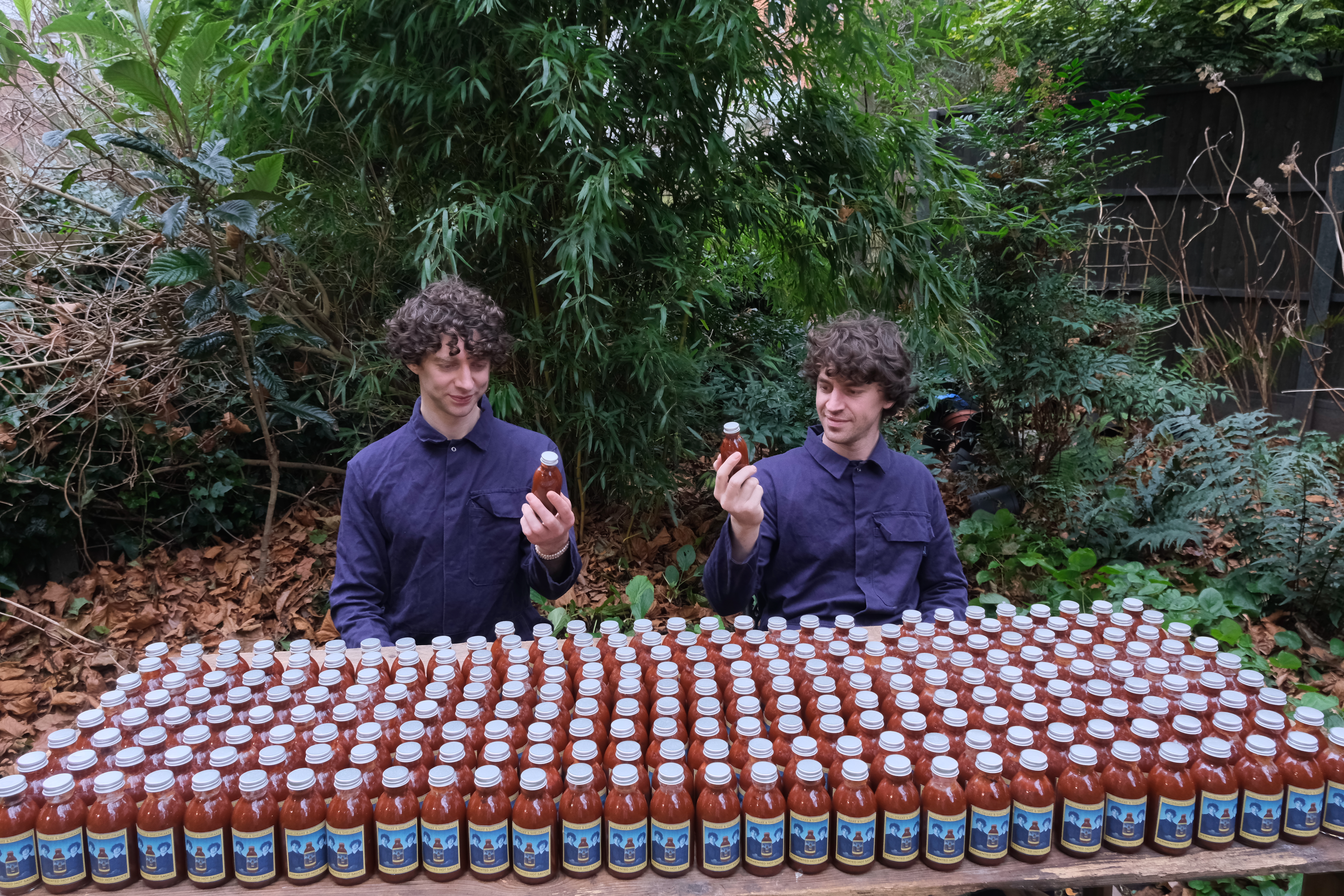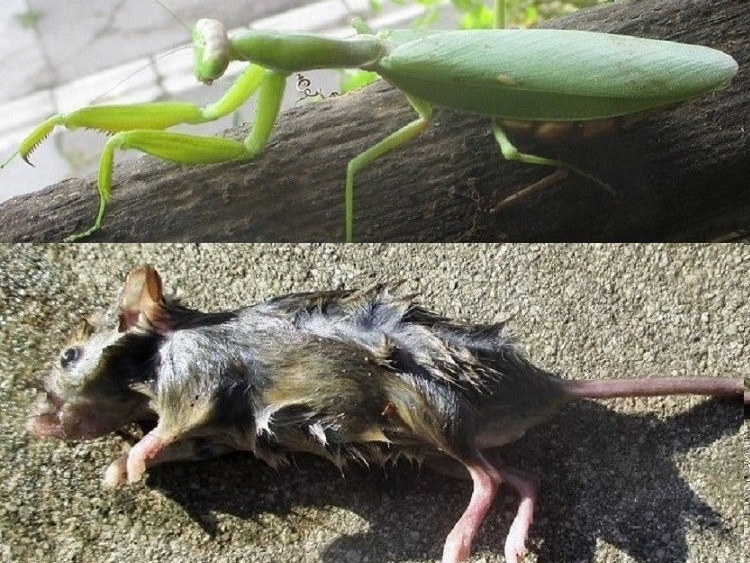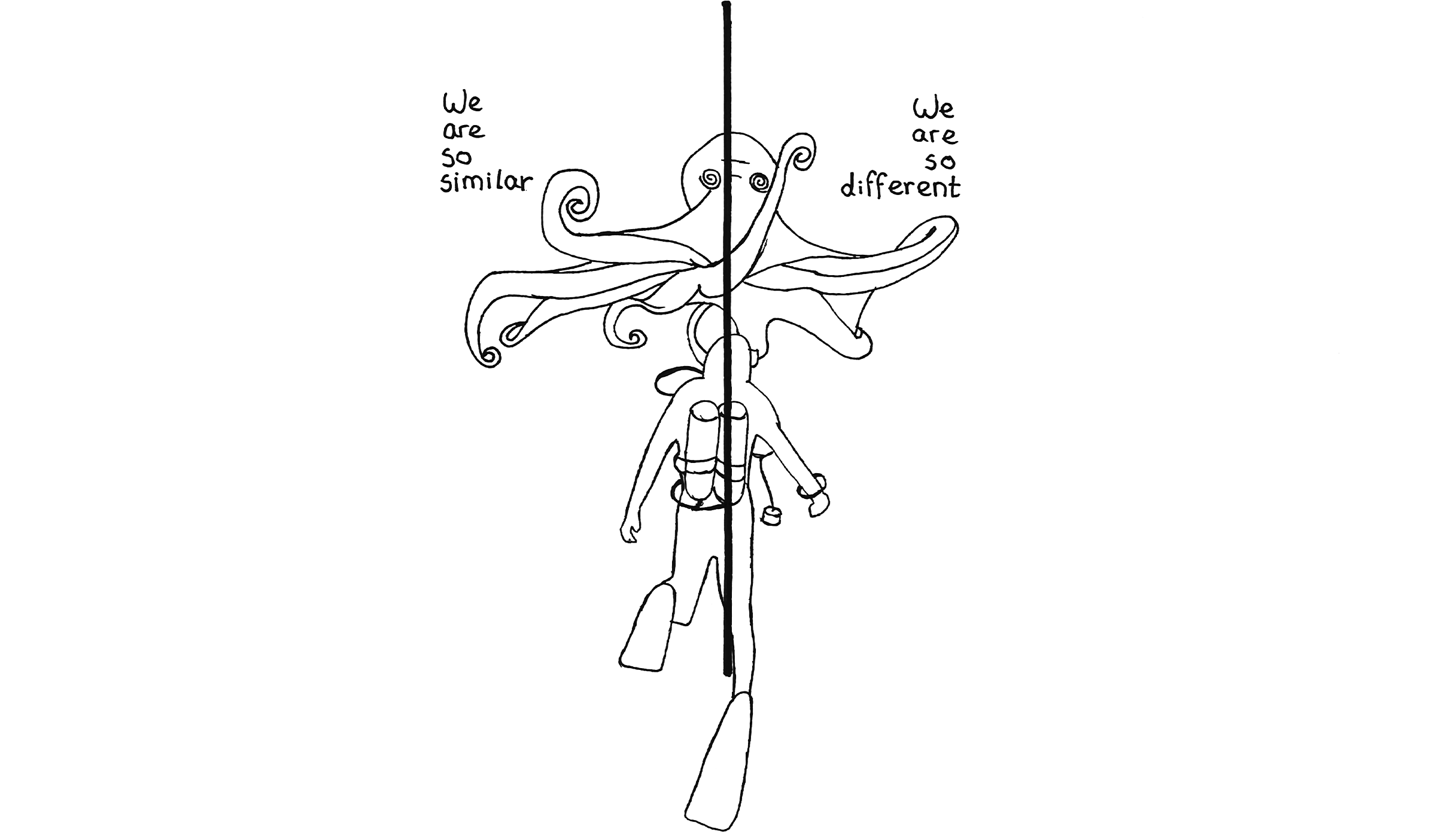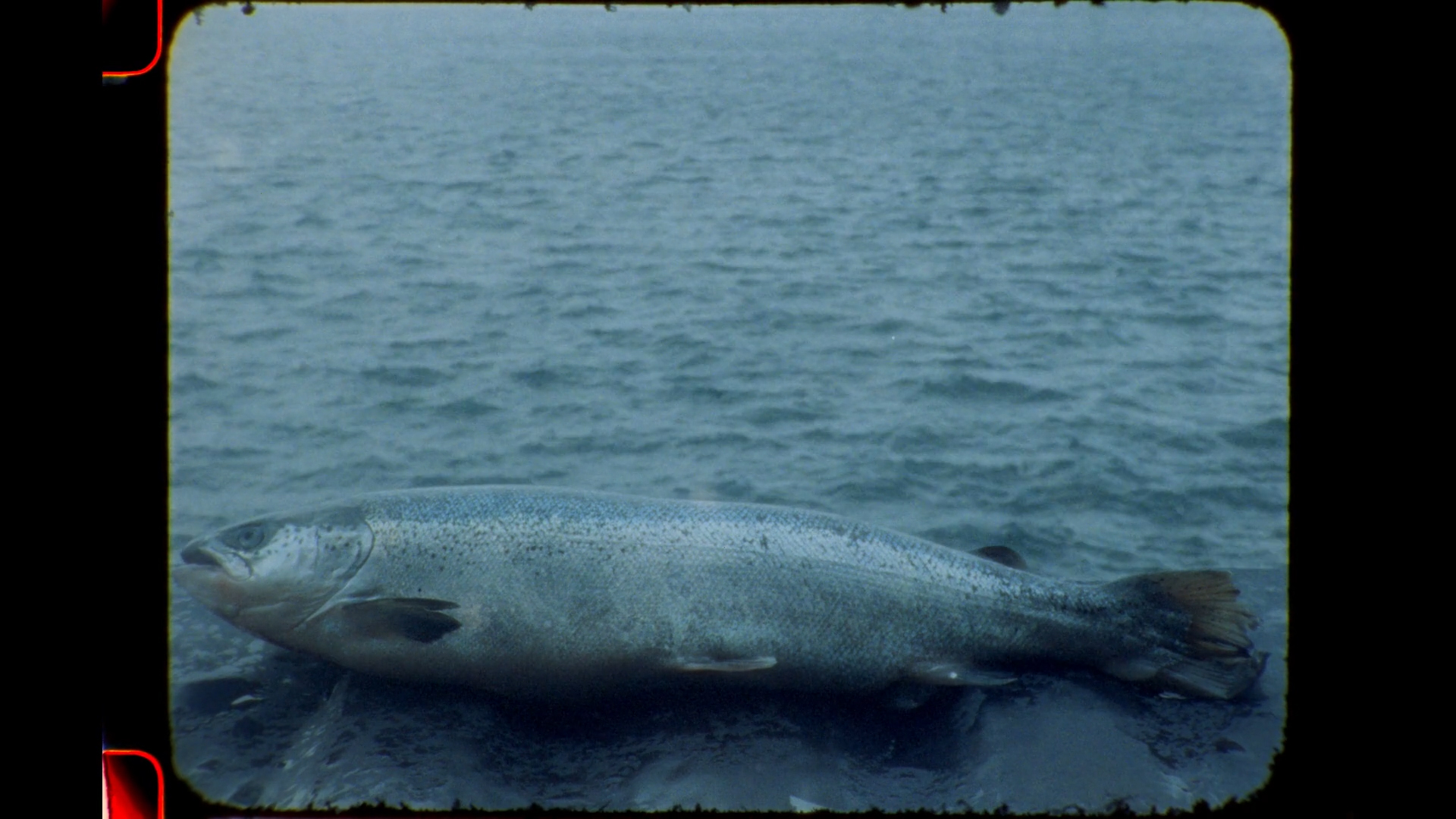April 13–October 14, 2018
In the back of Ballroom Marfa plays Emilija Škarnulyte’s video Sirenomelia (2018)—a short apocalyptic trilogy that explores the ruins of some of our species’ most advanced achievements in physics. A camera drifts, disembodied, through the Super-Kamiokande neutrino observatory in Japan. Pieces of CERN’s giant supercollider in Switzerland peel apart as our view rotates through virtual models of the experiments. The longest segment follows a mermaid as she explores the icy waters of a nuclear submarine pen. There is no dialogue, no didactics—only the watery abstraction of (our idea of) what our planet would look like without us. But the average contemporary viewer doesn’t need to be a scientist to interpret these images more thoroughly than a future mermaid. Why? It’s as Brian Eno put it before awarding the 1995 Turner Prize to Damien Hirst: Science has done a decent job explaining its own value to the general public. Art hasn’t.1
The exhibition “Hyperobjects” takes up the challenge. Where other exhibitions nod to philosophy (a.k.a. “theory”) this one is co-curated by the institution’s director Laura Copelin and an ecological philosopher, Timothy Morton, author of 2013’s Hyperobjects, and originator of the term. A hyperobject, in short, is something finite, yet too large or too complex to comprehend—like global warming, evolution, or the state of Texas. But try we must (although we will fail). The reality of imminent catastrophe leaves us no choice. To this aim, Morton has his own ideas about art: to paraphrase, that art’s pointlessness can help prepare us for what he calls the Ecological Thought—the knowledge of the directionless, chaotic “mesh” that connects everything in the universe to everything else. At this scale, writes Morton, there are no such things as “species,” distinctions like “living” and “non-living” break down, as does any notion of “positive adaptation” or progress (in biology as in art). It’s a scary thought, and it’s meant to be: instead of retreating to the relative safety of abstract infinities, Morton would have us confront a very real, very inconceivable finitude.
The pointlessness of art! Tara Donovan provides perhaps the most literal illustration of Morton’s theory with Untitled (Plastic Cups) (2006/2018): this topographic map made of thousands of stacked plastic cups suggests the wide reach of plastic—though it does little to help us apprehend the Great Pacific Garbage Patch—since where there is one cup, there are millions. At the same time, a cup is just a cup; the fossilized mammoth tooth, amethyst, and other geologic samples placed on white plinths look like rocks. We are meant to see the true extra-human stretch of time contained in, for instance, a long, millennia-old core sample (credited to artist David Brooks)—and yet! The presence of these more “traditional” museum objects also reinscribes the abstraction represented by so many gem and mineral rooms and petrified stumps. We recognize what we are supposed to learn—which is not the same as learning it.
The Los Angeles–based Center for Land Use Interpretation (CLUI), on the other hand, offers a comprehensive hybrid of art, technology, and bureaucracy. Their endeavors sound, and are, scientific; they are also absurd. For “Hyperobjects,” CLUI compiled satellite imagery of pit mines and prisons for a touchscreen display titled 50 Big Things in West Texas (2018). A deadpan delivery is crucial to CLUI’s healthy skepticism about the usefulness of its methods and didactics—to the point where the group is often accused of making art. Morton notes that standing cows align their bodies north to south, a remarkable behavior undiscovered until Google satellite views gave us the surplus perception to scope out feed lots from space. Indeed, CLUI’s project includes a vertical view of a gigantic beef packing plant, the cows arranged like iron filings on a magnet.
Where science gives us such fantastic access to the non-human, there’s a danger of fetishizing science. On the floor near the front desk rests a telescope part the size of a small John Chamberlain sculpture. When in use, the module amplifies light in concert with dozens of other identical modules—but how would you know? Something in a lay encounter with rocks, plants, and equipment doesn’t quite register the scale of the undertaking. It is one thing to guide our thinking toward the known unknowns of the cosmos, another to leave us paddling through a hall of abstract relics.
Other works take a more haptic approach—like Megan May Daalder’s Mirrorbox (2014), a two-person helmet designed to force the experience of face-to-face intimacy, or Sissel Marie Tonn and Jonathan Reus’s The Intimate Earthquake Archive (2016–ongoing), in which a special vibrating vest plays compositions based on earthquake data. A trio of deep pits dug into the dirt of the courtyard by Nance Klehm (Free Exposure (3 holes, 5 heaps), 2018) offer the viewer close aural and optical experiences of the soil they take for granted. The hope seems to be that art will model or even produce sublime encounters that will, in turn, prompt the ecological thought. The goal is to dissolve the new-age with the Anthropocene; to make catastrophe real.
Time, indeed, is an exemplary hyperobject—represented by one of the most unassuming and physically smallest objects in the exhibition: Equation of Time Cam, 01999. The five digits in the date are no accident: the lightly twisted bronze cylinder is a souvenir version of a part of a gigantic, 10,000-year clock under construction outside nearby town Van Horn. The clock, which will chime at inconceivable intervals, is the signature effort of The Long Now, a group co-founded by Brian Eno, with the goal of increasing our concept of time by a factor of ten. In other words, this twisted piece of bronze prompts us to abandon the millenarian mindset that almost relishes global collapse for a scale with ticks every 10,000 years—a scale that quickly exceeds human life, human civilizations, and the human species. It’s a small step, as far as time goes—but, perhaps, one we can manage.

